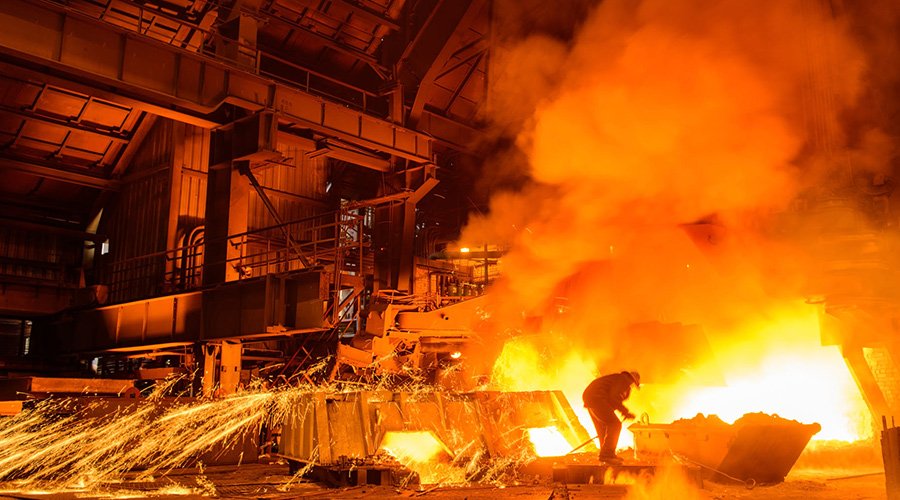Steel plays an important role in modern society, and the three common types of steel, crude steel, refined steel and special steel, play an important role in their respective fields. This article will explore the differences between these three types of steel and their applications in different fields to help readers better understand the development of the steel industry.
Crude steel:
Crude steel, that is, steel billets, are obtained by oxidizing pig iron in a converter to remove carbon and other impurities to obtain molten steel. After alloys and carbon are added to the molten steel, crude steel is cast.
Refers to products made directly from pig iron through an ironmaking furnace or other furnace smelting equipment. It usually has a high carbon content and retains slag and inclusions in the molten iron, so the texture is relatively loose. The production process of crude steel is relatively simple, the cost is low, and the manufacturing efficiency is also high.
Characteristics and application fields of crude steel:
Crude steel has high toughness and strength, and is widely used in construction engineering, bridges, railways, automobile manufacturing and ships. Its advantage is that the price is relatively low, and crude steel can meet the requirements for occasions where the structural strength requirements are not high or large quantities are required. For example, many major components in large steel structures and rails of high-speed railways are made of crude steel.
Limitations of crude steel:
However, the disadvantages of crude steel are also relatively obvious. Due to the presence of slag and inclusions, the surface quality of crude steel is low, and it is prone to oxidation, corrosion and fatigue. For some fields that require higher surface requirements, crude steel is not the best choice.
Fine steel:
Fine steel is an alloy material mixed with high-purity iron and carbon and other elements. It is not as strong as modern steel but stronger than other iron.
It is a steel obtained by finishing and modifying crude steel through hot rolling, cold rolling or heat treatment. In the manufacturing process of fine steel, higher quality can be obtained by controlling the content of alloy elements and adopting advanced heat treatment processes.
Characteristics and application fields of fine steel:
Fine steel has high strength, toughness and hardness, and has good surface quality. It has a wide range of applications in automobile manufacturing, aerospace, electronic equipment, tool manufacturing and daily necessities manufacturing. For example, refined steel in engine parts, body frames and transmission systems in the automotive industry can provide better durability and safety.
Manufacturing process and challenges of fine steel:
The manufacturing process of fine steel is relatively complex, and strict process control such as out-of-furnace quenching and surface treatment must be carried out. Since fine steel has high requirements for the content of alloy elements and stress distribution, its control and quality inspection in the manufacturing process are relatively difficult.
Special steel:
Special steel refers to steel that obtains special properties and application quality through special processes, specific chemical composition and organizational structure control. Special steel can be obtained by special processing on the basis of crude steel or fine steel.
Characteristics and application fields of special steel:
Special steel has special mechanical properties, physical properties and chemical properties, and is widely used in high-end fields such as automobile manufacturing, aerospace, electricity, petrochemicals, and manufacturing. For example, some special alloy steels can maintain their performance in extreme environments and are used for engine parts and gas turbines in the aerospace field.
Manufacturing technology and processing difficulty of special steel:
The manufacturing process of special steel is relatively complex, requiring precise alloy element blending and special heat treatment processes. Since special steel has high requirements in mechanical properties, chemical composition and organizational structure, its manufacturing and processing process is challenging.
Crude steel, refined steel and special steel play an important role in different fields and applications, and each has specific characteristics and advantages. Understanding the differences between these three types of steel and their application areas will help us better select and apply steel and promote the development and innovation of the steel industry.
Let’s understand together – the difference between crude steel, fine steel and special steel!

27
Mar

